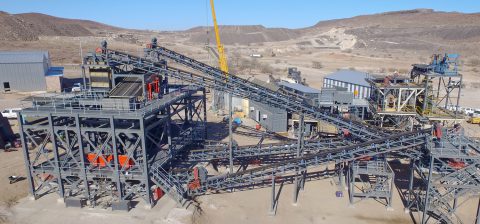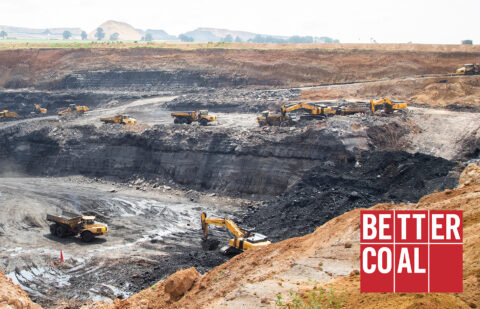SA Mining
Tin Talk
Given a projected tin shortage from 2018 onwards, emerging tin developers in Africa are set to play an important role in tin production. International Tin Research Institute (ITRI) statistics and market studies manager Tom Mulqueen took time out to answer questions posed by SA Mining related to an outlook for the tin market and the role Africa is playing in augmenting tin production.
Of the total global mined tin production (280 000tpa in 2016), how much does Africa contribute, and South Africa separately?
In 2016 tin-in-concentrate production in Africa was estimated at 10 700 tonnes, or just under 4% of global supply. The main sources of supply are the Democratic Republic of the Congo, Nigeria and Rwanda. ITRI is not aware of any active tin mining operations in South Africa.
Of the total global refined tin production (340 000tpa in 2016), how much does Africa contribute, and South Africa separately?
None. As far as ITRI is aware there is no refined tin production of significance on the African continent.
Can you provide us with an idea of which mines are reaching the end of their life and what production loss will occur?
Production costs for many alluvial tin operations in Indonesia are increasing over time as a result of the long-term decline in the size and grade of tin resources. This has impacted production over the past decade and is expected to continue, with the added pressure of stricter government regulation to prevent environment-damaging and illegal tin mining practices. Production from the Man Maw mining district in Myanmar was supported in 2016 and 2017 by the reprocessing of low-grade ore stockpiles and is also expected to decline in the years ahead from estimated output of some
50 000 tonnes in 2017. The San Rafael mine in Peru produced 18 789 tonnes in 2016 but has reported an ongoing decline in tin head grades and production over the past decade, although development of a new tailing reprocessing project near the mine should help offset future declines.
Given the above projection, is there an anticipation of tin shortfall?
Yes there is an anticipation of a shortfall in tin supply and we are projecting deficits from 2018 onwards.
What tin projects do South Africa and Africa have, and what is their production status?
The most advanced tin projects in Africa are the Bisie Tin Project in the DRC and Achmmach Tin Project in Morocco. The Bisie Tin Project is already in early construction with a final funding drive currently under way while the Achmmach project is also at an advanced stage and is now seeking full funding. In South Africa the only project we are aware of is AfriTin’s Mokopane Tin Project, which is still in early development. The Uis tin project in Namibia is also known to be operating a small pilot plant. Nigeria also has some private tin developers but the status of their projects is unknown.
What new tin projects are on the horizon?
Outside of Africa it appears that tailings reprocessing projects are the closest to production, with $200m funding recently approved for Minsur’s 5 000tpa B2 tailings project in Peru. Metal X’s 5 400tpa Rentails project in Tasmania is also awaiting a funding decision following the completion of a positive definitive feasibility study in early 2017. Looking further ahead, there are a number of promising industrial scale tin projects that remain in active development – Australia, the UK, Kazakhstan, Russia and Canada being notable locations.
Which countries are the largest consumers of tin and what is their consumption?
Global refined tin consumption is estimated at some 350 000tpa. The largest consuming regions, in order, are China, Europe, the United States and Japan.
Is there an emergence of new tin destinations/regions?
Nigerian tin concentrate exports have more than doubled in 2017 due to a rapid expansion in small-scale mining activity in the country in response to the country’s economic problems and the rise in the tin price. Production from the Inner Mongolia province of China is also expected to expand significantly in 2018 when new mining operations commence. Longer term, the locations of tin project development mentioned earlier are good candidates for future tin-producing regions, with Africa being an important example.
Is artisanal tin mining contribution important?
Artisanal and small-scale mining (ASM) still dominates tin production across the African continent. While development of tin projects such as Bisie and Achmmach would represent progress in industrialising mining activity, it is clear that ASM will continue to be an important part of Africa’s tin industry in the years to come.
What is the impact of the Chinese government’s requirement for a new tinplate national standard for “cold-reduced electrolytic tinplate” which comes into effect on 1 June 2018?
The new regulation poses a significant threat to many smaller tinplate producers, who will find the new technical requirements hard to meet. The original standards were introduced at a time when the tinplate industry in China was booming but in recent years the sector has been struggling with overcapacity, intense competition and low profitability. These new standards will be seen as a major step forward by larger producers who have been lobbying on the basis of food health issues to pressurise smaller producers with inferior technology. The environmental and health benefits of the new standards also fit well with the Chinese government’s recent drive for environmental improvement in the industrial sector.
What impact will this have on existing tin producers?
It shouldn’t impact tin producers as it is an issue for tinplate producers. Tinplate demand may be a little weaker than it could have been as a result, but the impact on overall demand should be limited.
What are some of the key factors that will influence tin demand and supply in 2018?
Indonesian tin export levels will be important in determining global supply changes in 2018. Much of Indonesian tin mine production is marginal and elastic to change in the tin price. In addition, there is the potential for increased exports of refined tin from China in 2018, as the domestic market is expected to remain oversupplied and there is likely to be a stock overhang from 2017.
Global consumption will continue to be driven primarily by demand inside China, which is strongly influenced both by the strength of China’s economy and export demand for downstream products containing tin, linked to the wider performance of the global economy. We expect global demand growth of between 1 and 2% in 2018.
Apart from existing uses of tin, are there any new uses that you are aware of?
There is a lot of current research and development work exploring the important role tin can play in emerging energy technologies, both in terms of energy storage, such as advanced lithium and post-lithium batteries, as well as in energy generation such as photovoltaics and hydrogen generation. This sector has huge growth potential globally and we think tin is well placed to benefit through some of these new tin applications currently in development.







 Sign-up and receive the Business Media MAGS newsletter OR SA Mining newsletter straight to your inbox.
Sign-up and receive the Business Media MAGS newsletter OR SA Mining newsletter straight to your inbox.